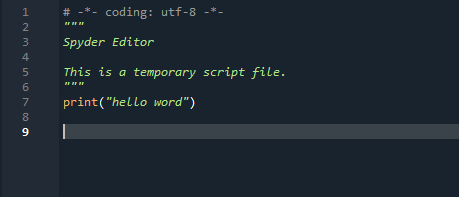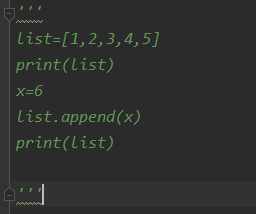菜鸟编程:
1.Spyder界面:左右两边都可以写程序

左边界面框:输入程序print("hello word") 按F5快捷键运行,在右界面框出结果。
左边输入:

按F5右边出结果:
![]()
左边可以写很多段小程序,F5运行时会把这几段程序结果都输出来。
右界面框:输入程序,回车直接出结果。
![]()
2.注释用#,可多行注释,若需要多行注释写在左界面。
多行注释可以用多个#号,还有 ''' 和 """

3.行与缩进
python使用缩进来代表代码块。不需要大括号{}
缩进的空格数是可以变的,但是同一个代码块的语句必须包含相同的缩空格数。
if True:
print("1")
else:
print("2")
1若空格数不相同,会导致运行错误,实例如下:
缩进数指的是向里收缩的意思,print前移缩进数变报错,后移不影响。
if True:
print("1")
else:
print("2") #缩进数不同
File "<ipython-input-19-ce72f1213308>", line 4
print("2")
if True:
print("1")
else:
print("2") #后移不叫缩进
1if True:
print("1") #缩进数不同
else:
print("2")
File "<ipython-input-21-15c4b3ebf0db>", line 2
print("1")
^
IndentationError: expected an indented blockif True:
print("1")
else: #if/else的位置:对齐
print("2")
File "<ipython-input-17-8d87826d7c98>", line 3
else:
^
SyntaxError: invalid syntax4.多行语句
(1)Python语句通常一行写完一条,如果语句很长,可以使用(\)反斜杠来实现。
total=1+\
2+\
3(2)在 [], {}, 或 () 中的多行语句,不需要使用反斜杠(\)
total=['1','2','3']
total={'w','o','r','d'}
total=('1','2','3')